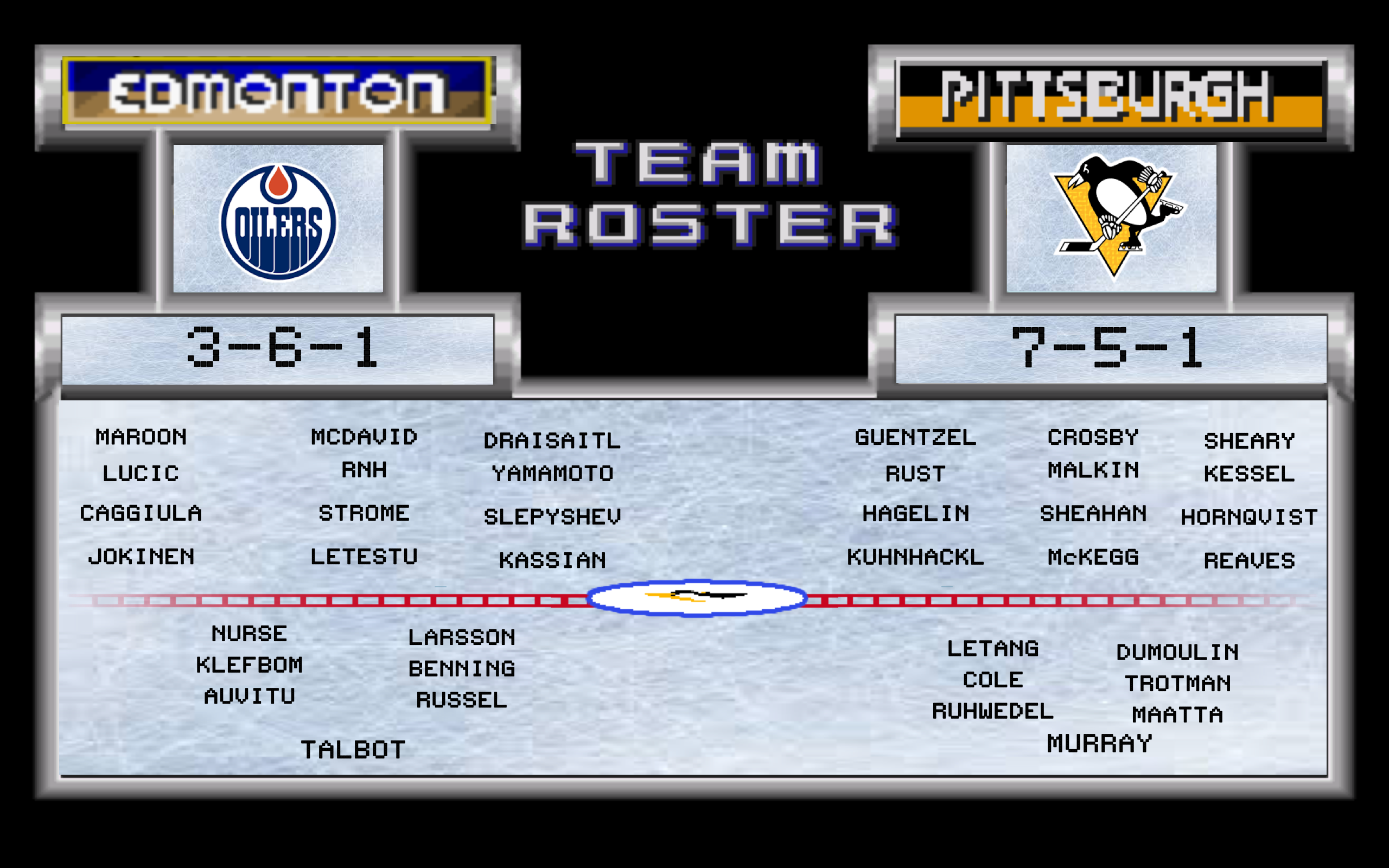

It hasn’t been very long since the Pittsburgh Penguins and the Edmonton Oilers last played each other (last Tuesday, a 2-1 OT win in Pittsburgh), so there hasn’t been much time for anything to happen in the standings. Edmonton is still second-to-last in the Pacific Division, while the Penguins are back in second in the Metropolitan Division, one point behind the New Jersey Devils. Therefore, I’ll spend this space mainly tying up loose ends.
Despite being in second in a very competitive division, the Penguins are hurting in the PDO metric. If you’ve been ignoring the advancement of metrics over the past few years, PDO (which is not an acronym for anything; NHL.com has it as SPSv%) is the sum of a team’s shooting percentage and save percentage. It is supposed to give you an idea of how “lucky” or “unlucky” a team is. To calculate PDO, you take a team’s shooting percentage, multiply it by 1/100, then add it to the team’s save percentage.
Right now, the Penguins are tied with the Montreal Canadiens for dead-last in the League with a .932 PDO. The Canadiens are tied with the Oilers for the second-worst record in the League, so PDO isn’t exactly a bellwether statistic for how “well” or “poorly” a team is performing, but there is something of a correlation between PDO and a team’s place in the standings which makes some sense: if your shooting percentage is high and your save percentage is high, you’ve been both scoring goals and preventing them well, and the inverse is true as well. Case-in-point: the Lightning, Blues, and Kings are the teams tied with the best records in the League and are 2-3-4, respectively, in PDO, and the two next-best teams, the Devils and Golden Knights, are also in the top 6. (The Oilers are sixth from the bottom in PDO, which makes more sense given their low position in the standings.)

Hey Darnell…I wanna axiom you sumpin’
There is an axiom among NHL followers that PDO is a metric that eventually regresses to an average of 1.000; the further your PDO is from that value, the “luckier” or “unluckier” your team has been. With their PDO in the basement, perhaps the Penguins are instead lucky to have remained among the Metropolitan Division leaders; conversely, should the Penguins begin to improve their miserable shooting and save percentages, the rest of the League should start seriously considering the likelihood of a Penguins three-peat.
I wanted to point some statistical oddities the Penguins are dealing with, to more or less highlight why it doesn’t make a great deal of sense to worry about how the Penguins are doing.
- Skewing Pittsburgh’s PDO have not only been the blowout losses they’ve experienced, but also the close wins. The Penguins are fourth-worst in goal differential, but aside from the three blowouts they have the best record in the League, 6-2-1, in one goal games and have a +7 goal differential.
- Kris Letang has been getting some negative feedback on his play, and he is the worst player in the League with a -14. He also has the League lead in total shifts and third-highest average time on ice at 26:30/game. (The highest rate is Buffalo’s Rasmus Ristolainen at 27:23/game.) He’s also tied for third in the League in power-play points, highlighting his influence on the third-best power-play unit in the League.
- Despite his inflated GAA, depressed save percentage, and hanging out with Montreal’s Carey Price and Arizona’s Louis Domingue among the League leaders in goals allowed, Matt Murray is tied for second in wins. He’s also faced the fourth-most shots and made the fifth-most saves.

Tonight marks the (roughly) 1/8th point in the season. If the playoffs ended tonight, the Penguins would face the Columbus Blue Jackets in the first round. Let’s all be thankful that we have another four-plus months and 67 games of regular season hockey to go.

